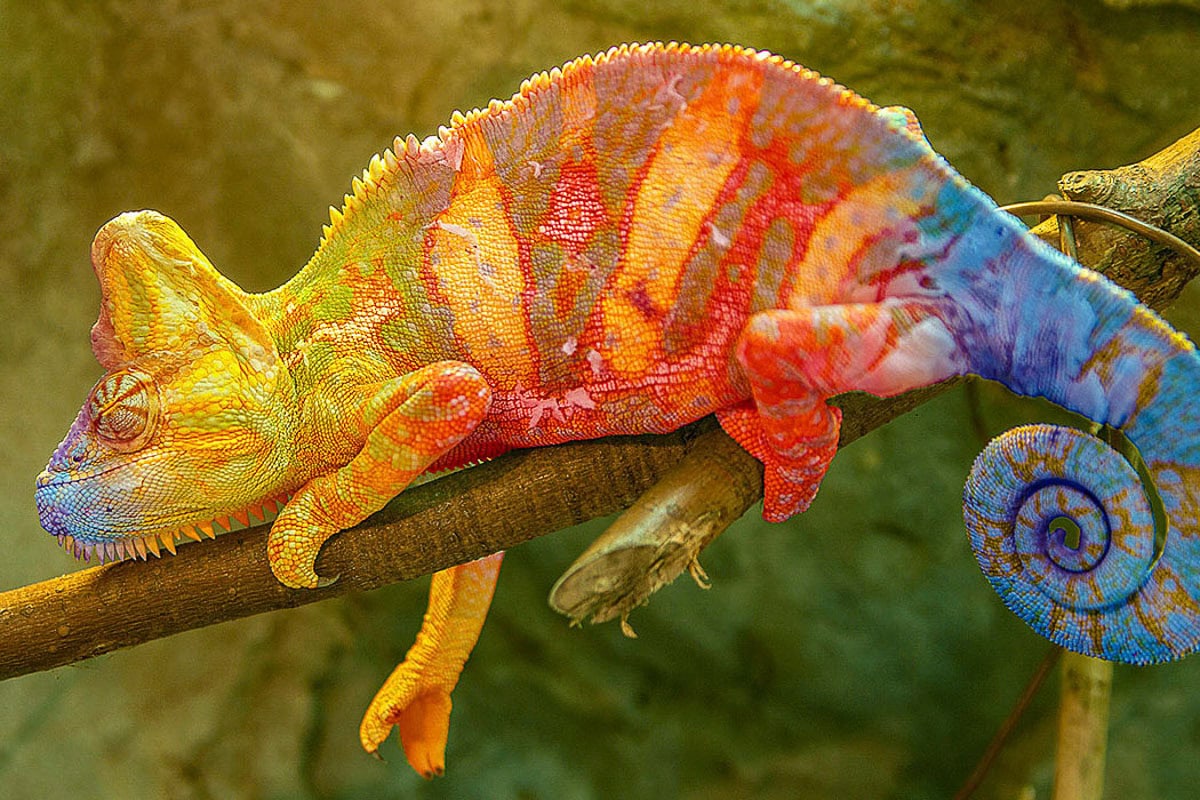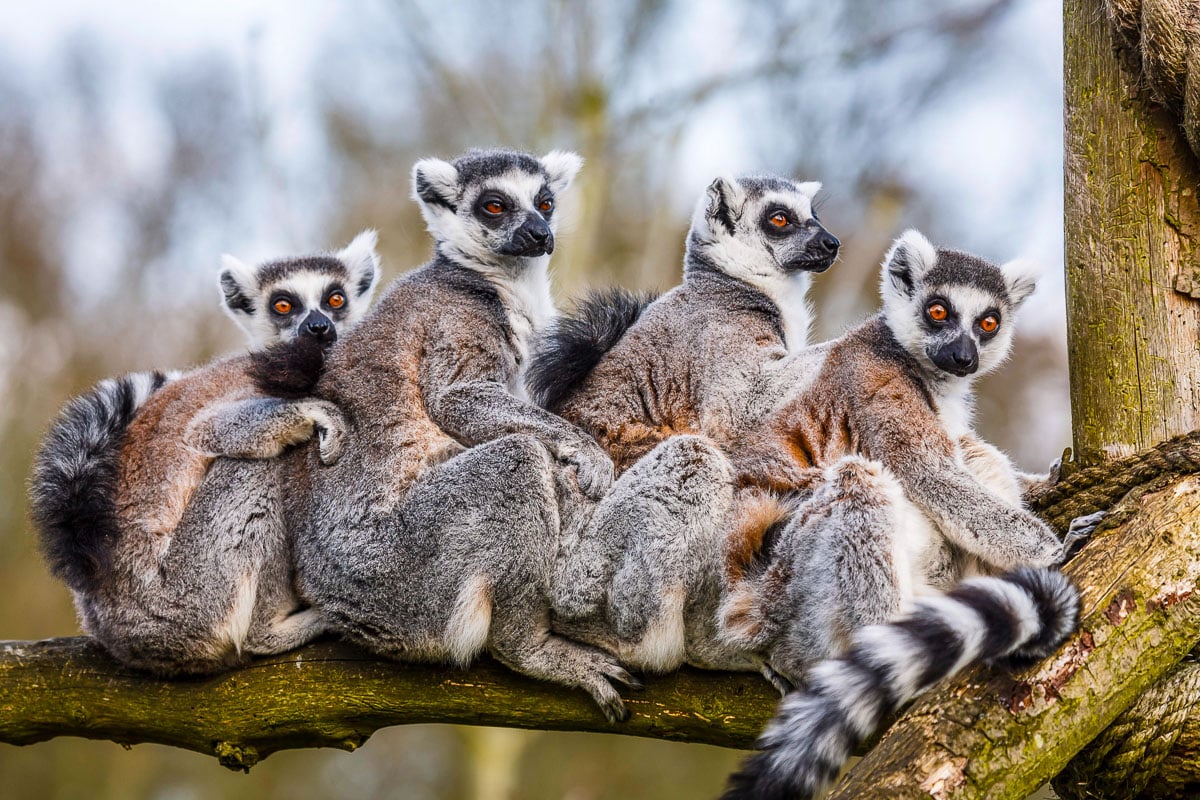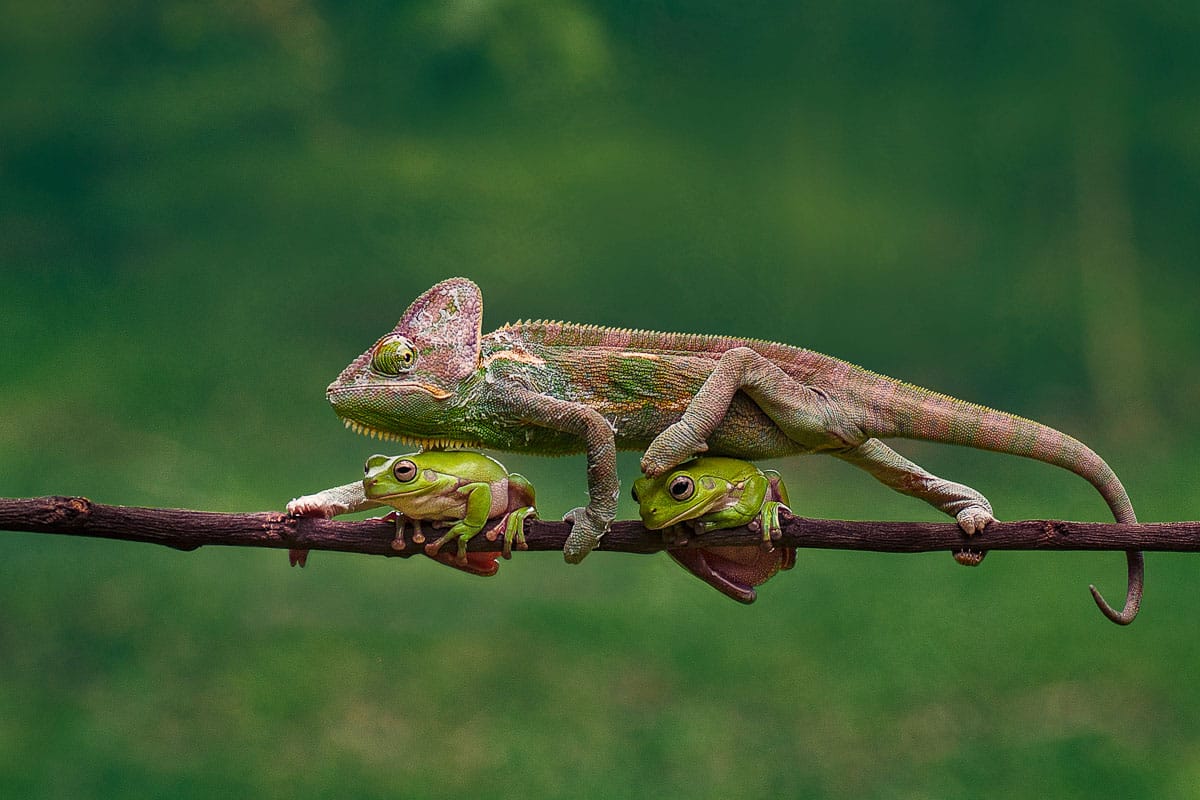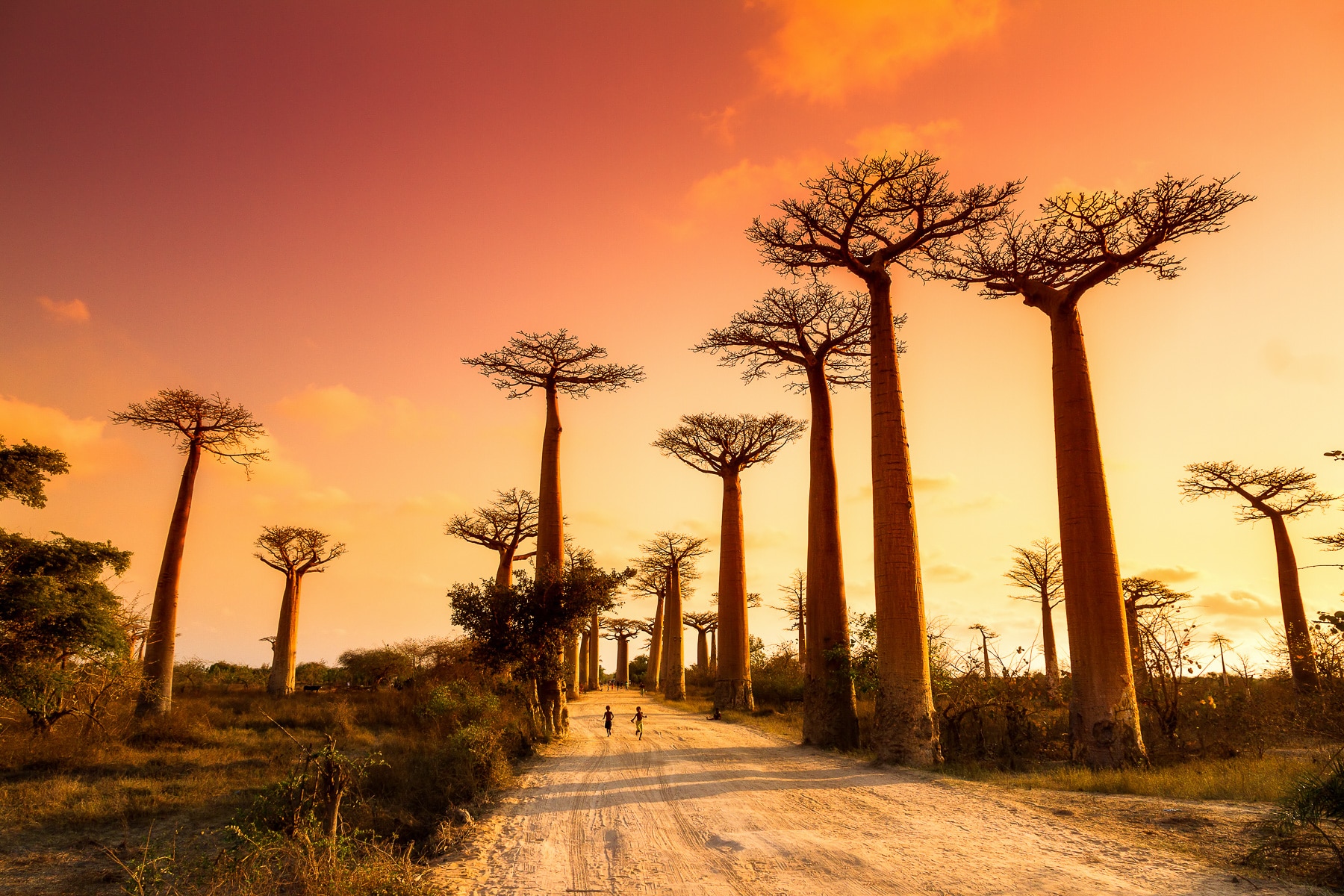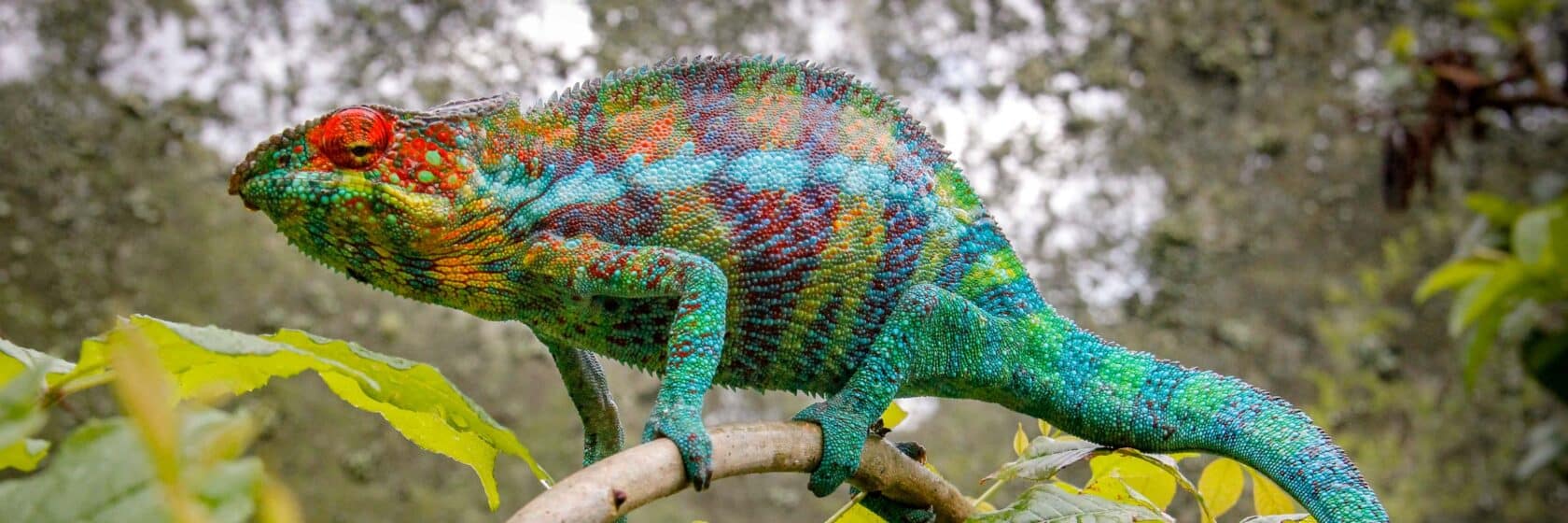
Madagascar
Where to Find Lemurs, Chameleons, Baobabs, and Tsingy in Madagascar
Where is the best place to see lemurs?
Each park in Madagascar is home to endemic species unique to that particular environment. You’ll likely see more than half a dozen species at Andasibe, but it you’re looking for dancing sifaka lemurs, Berenty is your best bet. Ankarana is home to one of the largest populations of crowned lemurs, and nearly 500 ring-tailed lemurs live at Anja. Lemur Island is a good place for photos, because the lemurs are curious and habituated to humans. Our Madagascar’s Best Parks section provides more detailed information, but no matter which adventure you choose, know that you’ll see plenty of these lively and engaging creatures.
What is sifaka and where can you see them?
Sifakas are good-sized lemurs (16 to 22 inches tall) with long tails. Berenty Forest is the best place to see Verreaux’s sifaka as they “dance”—standing upright, they skip and hop across the ground in front of us in an odd ballet. Berenty is an especially good place to photograph lemurs dancing in the forest, because there are wide open spaces between the trees—unlike other parks where branches are closer together and the sifakas prefer to jump from tree to tree. (The IMAX film Island of Lemurs includes scenes of Berenty’s dancing sifakas.) And it’s even easier to get spectacular photos at our lodge, where sifaka often dance right on the breakfast terrace!
Zombitse-Vohibasia National Park is another good place to spot Verreaux’s sifaka, and Ranomafana National Park is good for the Milne-Edwards’ sifaka.
When is the best time to see baby lemurs?
The best months to see baby lemurs are September and October, when the little ones are a few months old and can move onto their mother’s back and begin to climb alone.
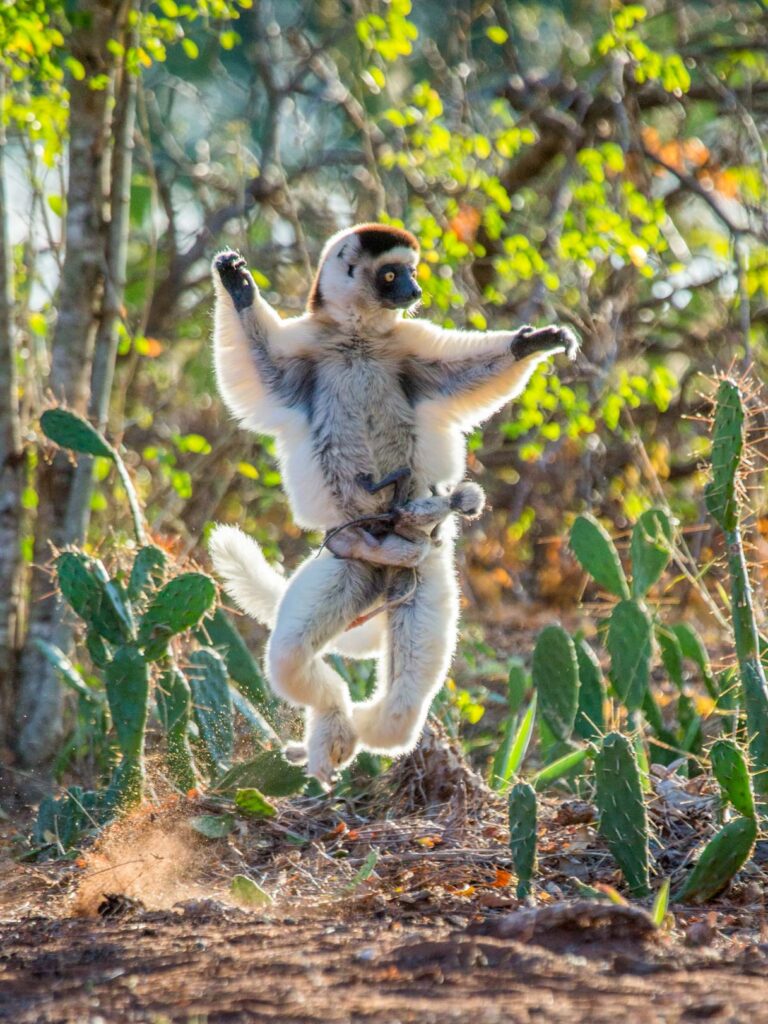
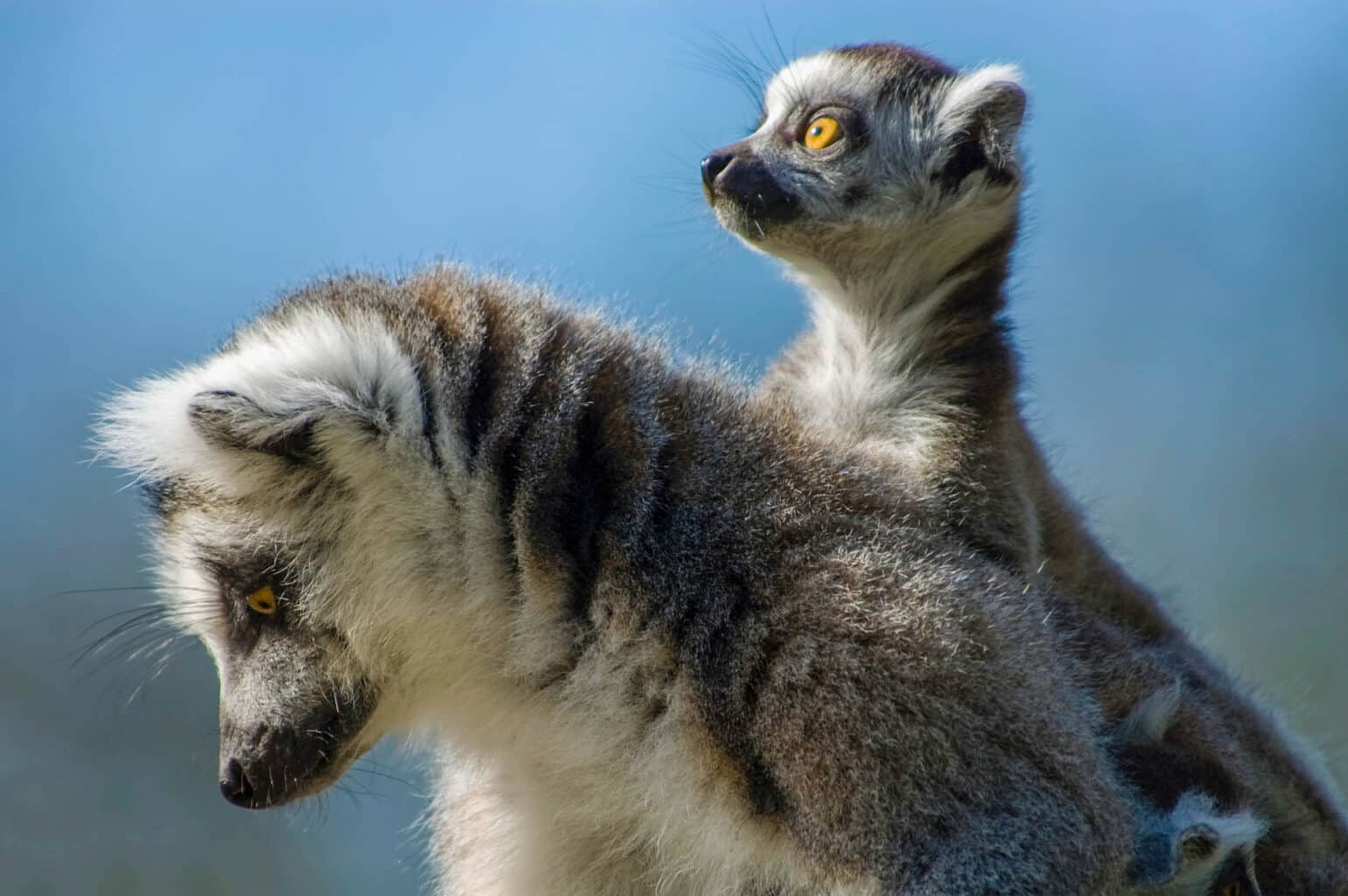
Where are the best places to see chameleons?
Madagascar is home to more than half of the world’s 150 species of chameleons, including the huge, colorful Parson’s chameleon and the tiny, one-inch Brookesia micra. They’re easy to see at night—just look for the creatures with bulging eyes shining out of the darkened forest. While you can find chameleons everywhere you go, we recommend the following parks:
- Amber and Ankarana national parks (in the north, near Diego Suarez)
- Anja Community Reserve (south, near Ambalavao)
- Isalo National Park (south)
- Zombitse-Vohibasia National Park (south)
- Kirindy Reserve (west)
- Berenty Reserve (southeast)
Chameleons living in eastern rainforest—including the spectacularly colored Parson’s and panther chameleons—can be difficult to see in the wild. Our local guides are skilled at finding chameleons hiding in plain sight, but if you want more, the Mandraka Reptile Farm is an excellent option for seeing them, along with many other species. (Both trips visit Mandraka enroute to Andasibe.)
When is the best time to see chameleons?
Many chameleons hibernate in Madagascar’s cooler months of July and August, so the best viewing is from March through mid-May, and from October through December.
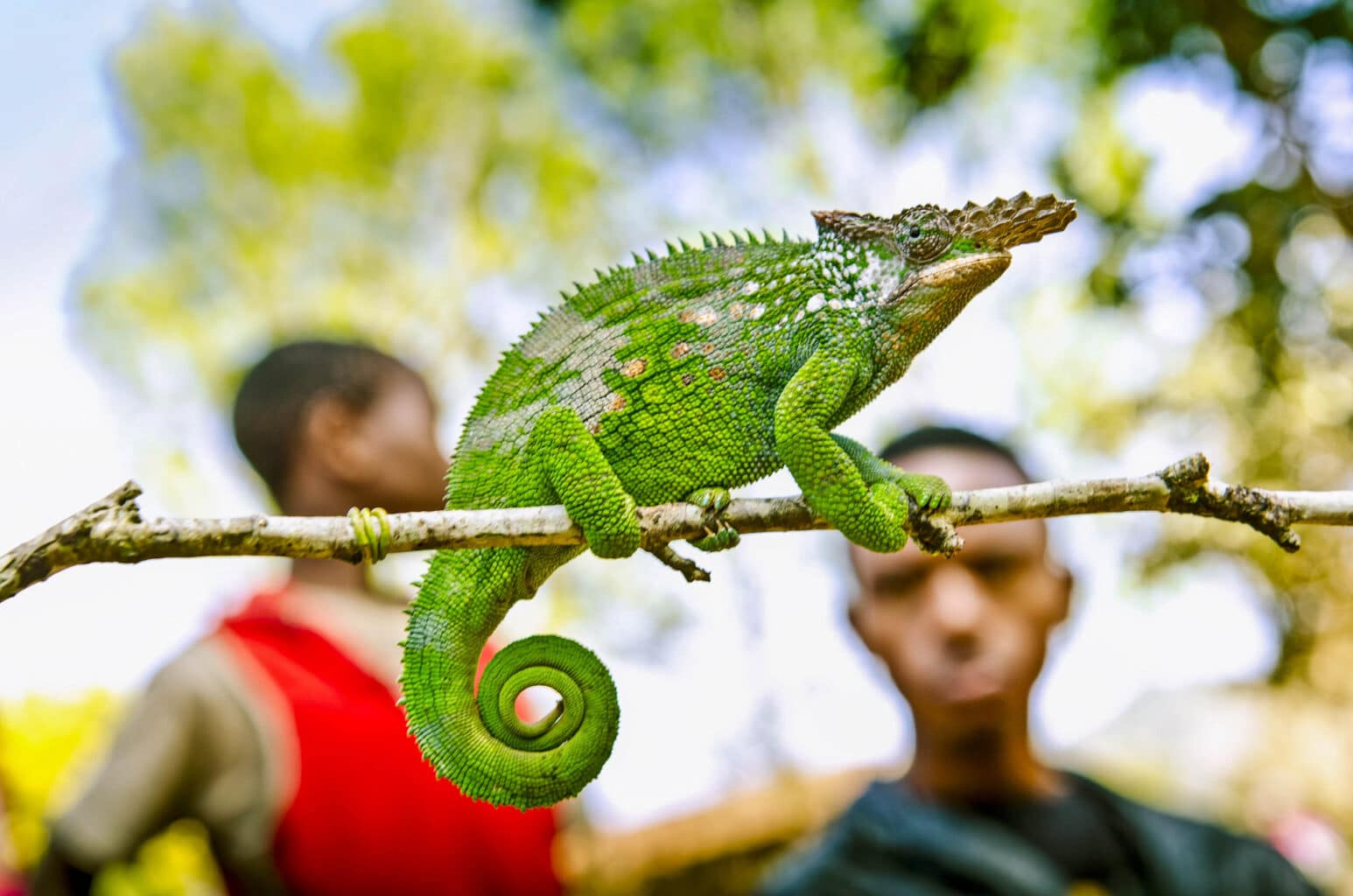
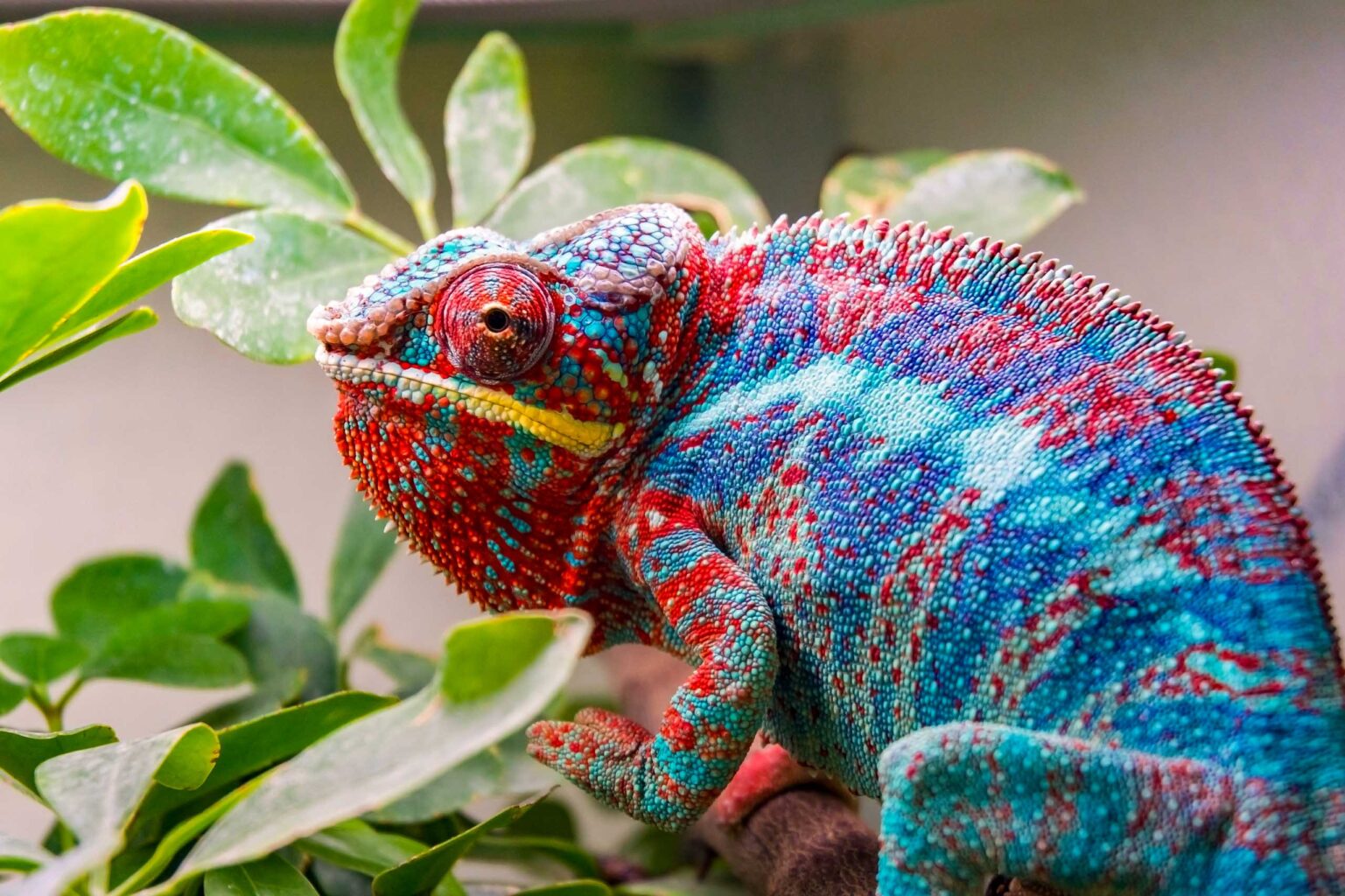
What is a baobab and where can I see one?
Baobabs are sometimes called “upside-down trees” because of their odd shape: they look like they’ve been upended and replanted with the roots pointing skyward. They’re also called “bottle trees,” because their thick trunks hold lots of water—up to 32,000 gallons per tree! In addition to water, baobabs provide food, medicine, beer, and fibers for rope and cloth. With a diameter of up to 30 feet or more, the hollowed-out trunks of baobabs have even been used for shelter, and as prisons or tombs.
These ancient trees can live for several thousand years, and grow to be nearly 100 feet tall. Unique and majestic, they have become an iconic representation of Madagascar. On the Magical Madagascar trip you will see baobabs at Ankarana National Park and Berenty Forest. On Madagascar: Off the Beaten Path you can actually plant a baobab seedling along the Avenue of the Baobabs.
Where is the avenue of the baobabs?
The Avenue of the Baobabs lies along the road linking Morondava and Belo Tsiribihina—about two-thirds of the way down Madagascar’s western coast. On Madagascar: Off the Beaten Path we visit a baobab reforestation project at the Avenue of the Baobabs, where you can meet Malagasy environmentalists and plant a baobab seedling. We visit at sunrise and (optionally) sunset, so you can get photos of this magnificent scene—a red dirt road, with swollen-trunked trees pushing into the blue sky—in perfect light.
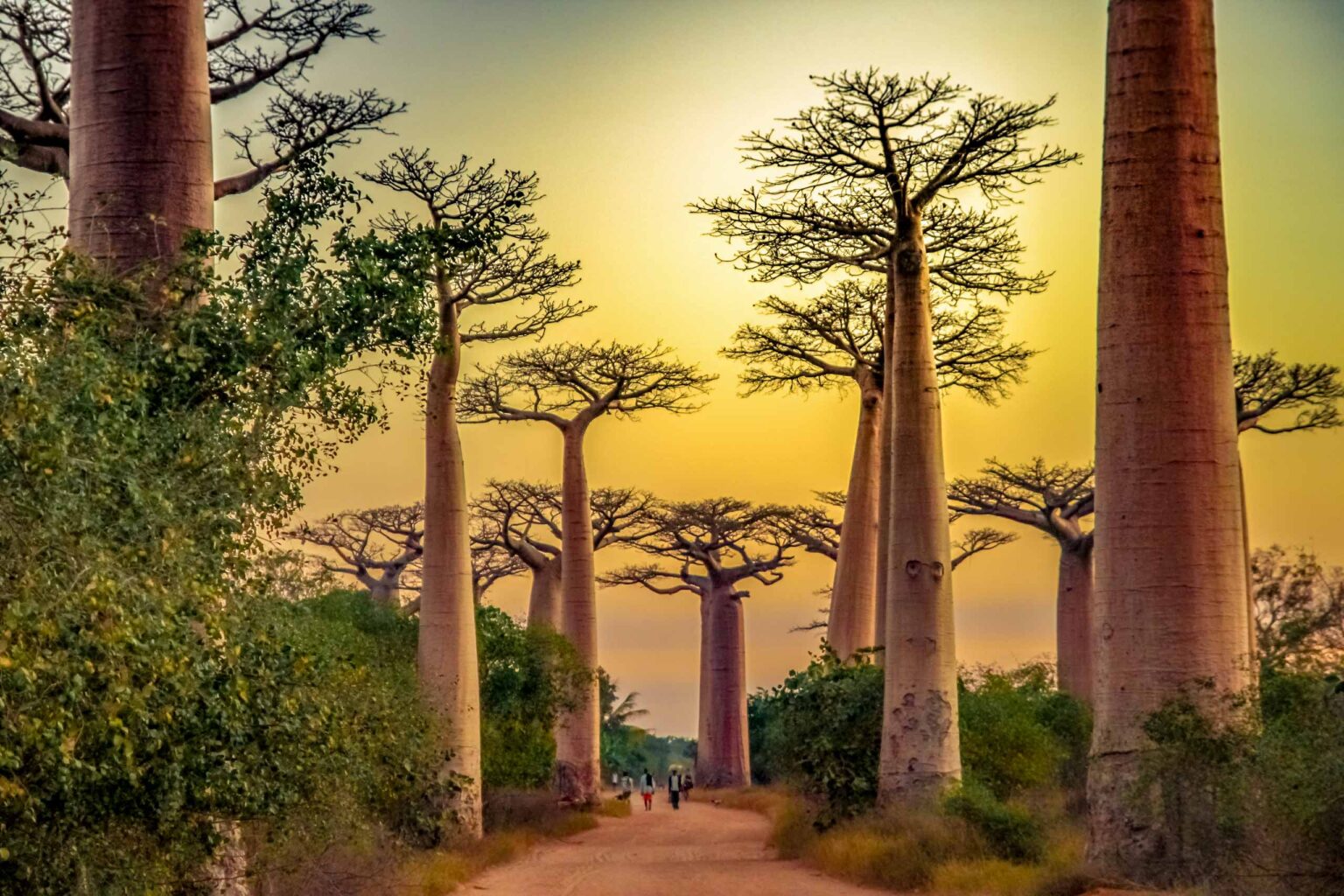
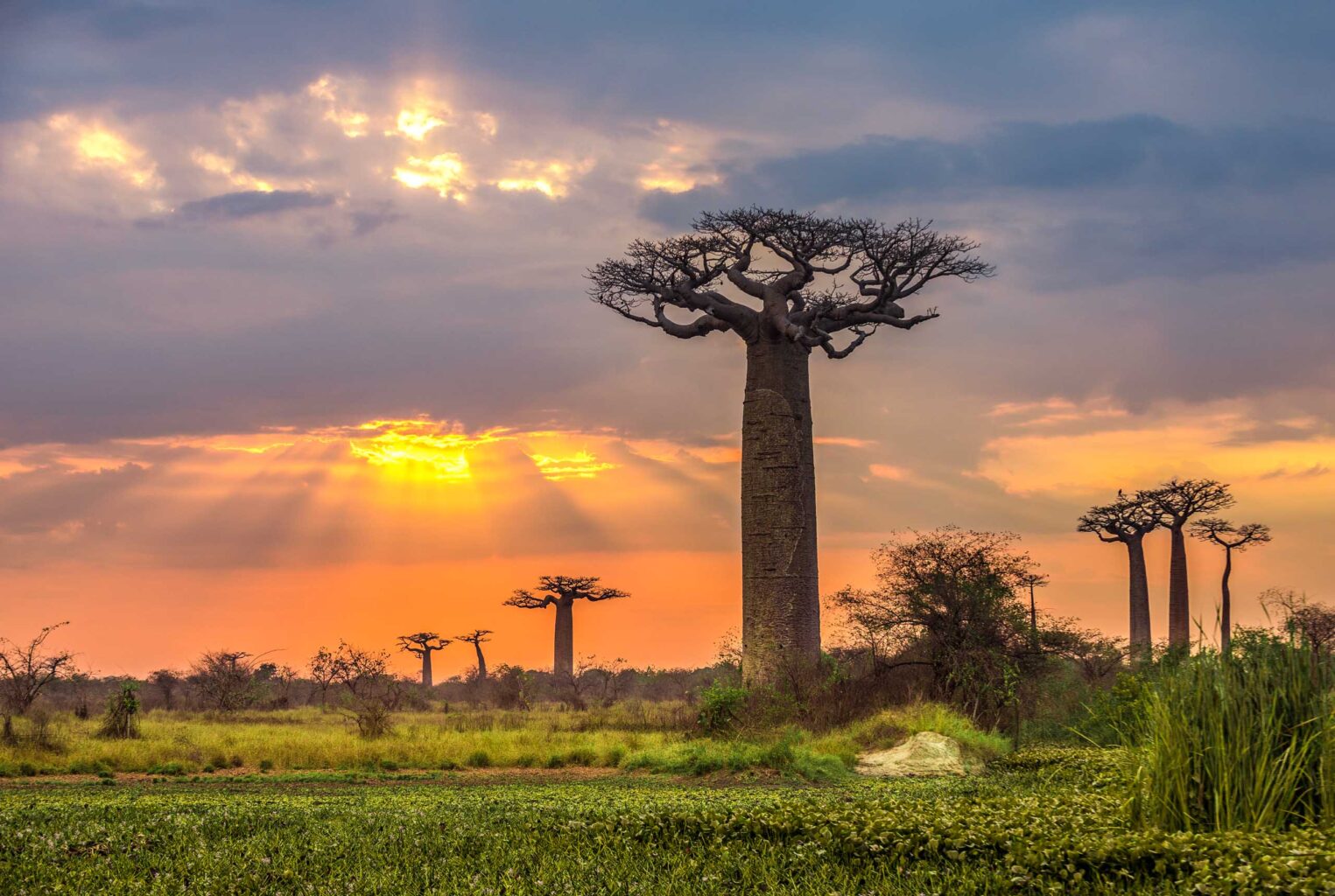
Where is the best place to see tsingy?
Tsingy are unique eroded limestone towers that create a stunning landscape of jagged edges, steep canyons, and disappearing riverbeds. We recommend Ankarana National Park for the best combination of accessibility and comfort. It’s a 2-hour drive from Diego Suarez and hikes are easy to moderate. We see spectacular tsingy landscapes of razor-sharp limestone peaks crossed by deep gorges and rivers, and can also visit caves with impressive stalactites and stalagmites. We do not recommend Tsingy de Bemaraha National Park because of its remote location, difficult terrain, and high temperatures with no breezes.
Where can I see the Spiny Forest?
Southern Madagascar’s remarkable Spiny Forest ecosystem is easily explored at Berenty—a remarkable reserve with excellent birding and many species of lemur (including “dancing” sifaka). It’s a bizarre world of spiky Dr. Seussian octopus trees and swollen baobabs, and a good place to find unusual wildlife, like the endemic subdesert mesite (ground-dwelling birds that sing communally). Magical Madagascar travelers will see the spiny forest at Berenty, and Madagascar: Off the Beaten Path travelers will see displays of the spiny forest at at Isalo the Antsokay Aroboretum botanical garden in Tulear.
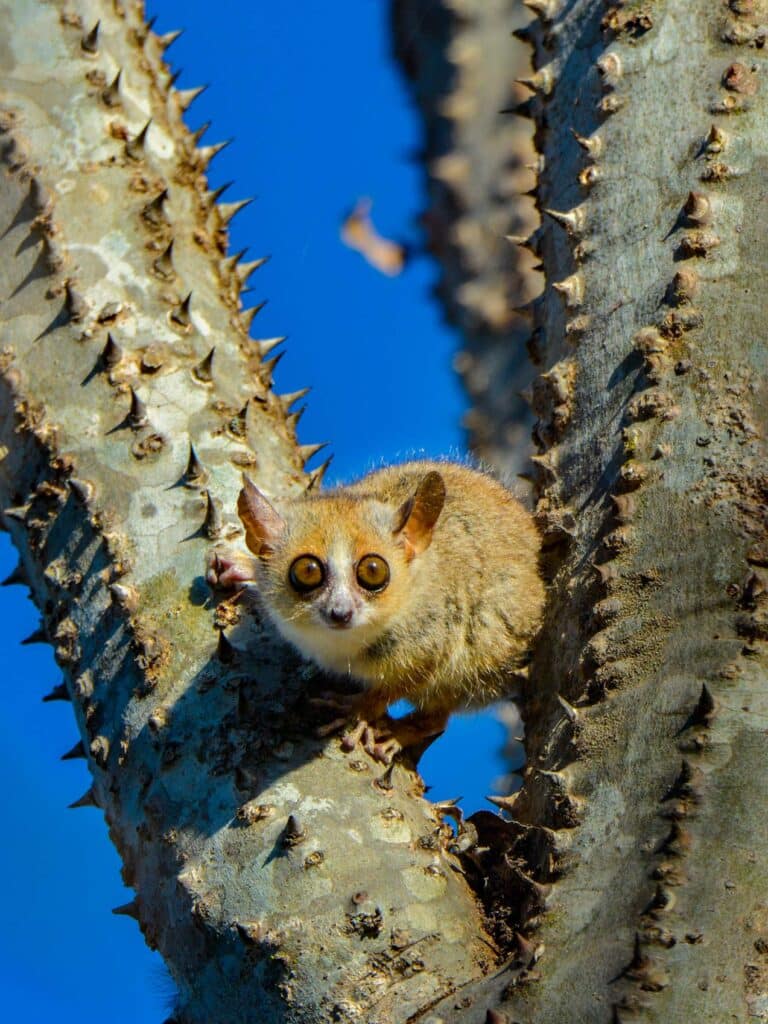
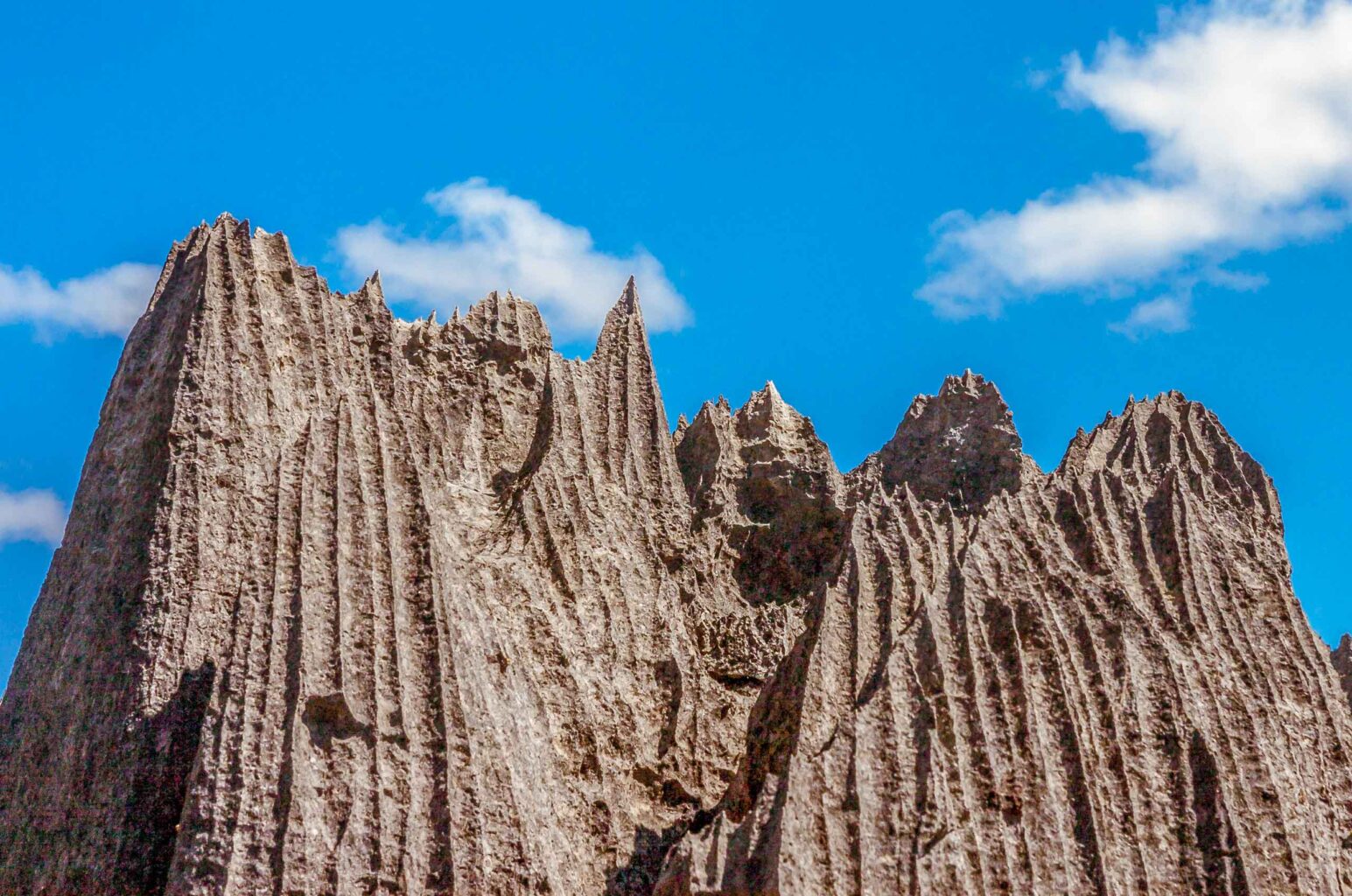
Learn More
Talk to an Expert
Our Africa Specialists know every detail about our Madagascar trips. They will be happy to answer any questions and help you choose the journey that’s right for you. Contact us to learn more or book your trip today!

